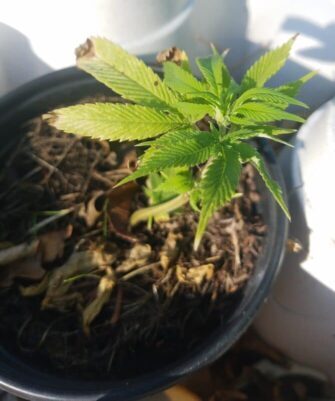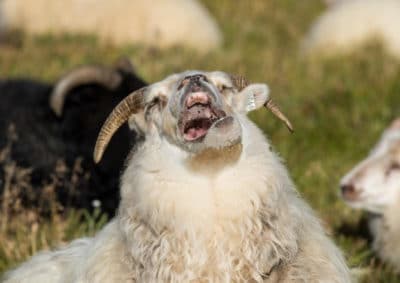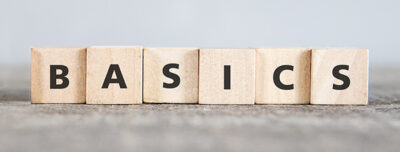
Cloning Without Rooting Hormone Gel
This clone was propagated without any hormone whatsoever. It also was rooted outdoors under a semi enclosed greenhouse and no dome directly over the plant. This seemed only a bit short of miraculous to me, since in the past I have never had much success with cloning, even with a dome cover directly over the plant.
I was talking to a friend about trying again and he told me of an interesting experience he had using only saliva as his rooting hormone. Apparently he had a great success story of merely chewing on clones and turning a mother into a new generation of crop, so I decided to do some research and find out if there was anything to it. I wanted to find out why I hadn’t heard of this before and was interested to know what us growers might have been missing or unaware of when it comes to rooting certain species. I found and came to some surprising facts and conclusions along the way.

Unnecessary Costs Can Add Up
Purchasing rooting products over and over will of course add up over time if you want to keep cloning lots of cuttings on an ongoing basis. On the other hand, sometimes you just want to make a couple of clones and don’t really want to buy a whole bottle of hormones just for that. While these commercial products cost money, thankfully mother nature provides us with free methods to use as we please. There are suggested alternatives to rooting hormones and believe it or not folks, one of them is human saliva! Some say it’s even better if you can find a sheep to lend you some spittle! Now to find out if there’s any science to back up these outlandish proposals.

Do you need rooting hormone when propagating clone cuttings?
First, it should be noted that this advice may not apply to all species. Some root less readily than others. You should consider trying this method only on a small portion of any size-able crop before risking your entire investment on a new method.
One big tip to mention is that you must not tug on the shoot to test it, ever! The roots will be very delicate until it’s obvious that it has taken off anyway. Just have faith for a few weeks, trust me. This was my number one mistake in the past. Even after a couple of weeks a dying plant has been known to rise from the ashes, like the legendary Phoenix, once again. My first attempt without using rooting gel started to bounce back and green up a little in about a week and a half uncovered and outdoors in moderate fall weather (the plant in the very first picture of this article).

The Secret "They" Don't Want You To Know
Most plants already have endogenous hormones stored in the leaf tips. When all conditions are met, the cutting will use these hormones to grow roots and establish itself. Therefore, for most plants which readily root from their stems, you don’t need root growth hormone at all to successfully clone plant cuttings. Using human saliva does seem to help, but not in the way that my friend and I initially assumed. Although human saliva does not necessarily add more hormones, it may make the process faster. The digestive enzymes mixed with the chewing action will break down the stem tissue and encourage roots to form from the compromised tissue. It may even keep the cuttings healthier during the process due to beneficial bacteria in the saliva such as lactobacillus which out-compete the disease causing pathogens.

How Come I've Never Heard Of This Before?
For some reason it’s simply assumed that all plants need rooting hormone in order to successfully make cuttings . This is another common case of a falsehood commonly accepted as fact. Many plants root very easily. Some will even root if the stems just come into contact with soil for too long– without a single cut! Tomatoes and strawberries are a good example of this. The ficus tree is an extreme example that does not even need soil contact directly on the stem. The trunk will form roots and find the soil on their own (called aerial roots).
I first heard about this tech from my roommate who was in a pinch one year after accidentally killing the bulk of his crop. Using intuition from previous grows he concluded that the plant should be able to regenerate without rooting hormone, so he simply took cuttings and chewed the very ends of their stem to the point where the fiber started to break into separate strands, but not enough to mush it up. He then stuck them in small, uncovered planters (I think he said plastic cups w/ drain holes) and left them uncovered.
These were not his plants and he urgently needed a solution to his careless mistake. When the owner returned, the quote I remember hearing was: “What the **** did you do?”
All of the cuttings had started to perk back up towards the light and to everyone’s amazement, the yellow slowly turned to green!

Saliva Of The Lambs
In 2014, research was conducted that tested sheep saliva on the effects of plant growth. The study showed that sheep saliva is most effective in promoting growth of leaf biomass, and buds when compared with water or salivary (isolated, possibly synthesized?) components.
Specific salivary components studied were: epidermal growth factors (EGF), thiamine, and the combination of the two. While it did not prove that the saliva affects root growth directly, they found that animal saliva can help plant growth in various ways. The theory is that animal saliva may serve a secondary function with it’s digestive abilities to accelerate the process of root formation after cutting.

What Role Might Human Saliva Play In Rooting Clones?
Human and sheep saliva have some minor differences, but they contain the many of the same enzymes. Hence, they may have a similar effect on plants. Human saliva does not directly contain the hormones which help stimulate growth of plant roots, but it does contain enzymes that accelerates the transformation of stem cells into root cells. The enzymes can breakdown complex sugars like fructans into simple sugars like glucose and fructose, which the plant can use to grow new roots. Human saliva also contains vitamins and minerals that the plants can also use as a source to stimulate growth. Therefore, adding human saliva can help to grow roots because of the trace minerals and enzymes, not necessarily because of hormones present in the spit. Similar to sheep saliva, plant can use the components inside the saliva to help it to survive and transform.

The Basics of Cloning a plant
To clone a plant, you cut off a part of the main or stock plant and place the cutting in a medium to encourage root growth. The most common medium is water, but you can also place the cutting in soil. Some encourage the use of root growth hormones that contain the auxins IBA or NAA to help the roots grow faster. But for such plants as cannabis (or especially tomatoes) there is no need to do so. Roots grow readily from the cut point and have for thousands of years. You can take a cutting from any part of the plant (the results will vary), but normally they are at least a few nodes below the youngest node. Go for some thing healthy that has enough leaves to photosynthesize food, but not too many to sap out moisture before rooting. You can reduce the leaf number but cutting off the leave tips but avoid cutting leaves in half to reduce water loss. Read more about optimal leaf balance below.

Documented Effects of Auxins On Root Growth
It was in 1928 that a Dutch botanist isolated the first auxin, which is indole-3-acetic acid (IAA). Auxins have been known to stimulate plant growth since 1928. According to World Scientific:
“Pioneer studies in the 19th – early 20th century leading to the discovery of auxin are introduced first. In 1928, Dutch botanist Fritz W. Went finally isolated auxin diffused out from the tip of oat coleoptiles in the gelatin block. Following Went’s success, auxin, indole-3-acetic acid (IAA) was then isolated first from human urine, then from fungi, and finally from higher plants. Discovery of auxin is thus the result of the work of many botanists and organic chemists from various countries. Biosynthesis, metabolism and physiological actions of auxin are also briefly described.”
After that IBA and NAA were also harnessed to factilitate and augment the rooting process. IBA can be found as an organic product and is the most common ingredient in rooting hormone products available for purchase today. NAA is a purely synthetic chemical which is never generated organically. According to Wikipedia: “The hormone NAA does not occur naturally, and, like all auxins, is toxic to plants at high concentrations”
It’s our understanding of plant auxins that allow us to clone plants so easily via different propagation methods today. One may duplicate a very similar or exact match of a mix of plants for a very long period of time. Different propgaation methods may include budding and grafting depending on the species.

When is it necessary to purchase rooting hormones?
The only time that it’s truly necessary to purchase commercially made hormones for artificial rooting stimulation is when you are trying to clone a plant which does not easily form roots when the stem is cut or put into direct contact with soil. The most common rooting hormones available for purchase contain indole-3-butyric acid (IBA) and or alpha-naphtalen acetic acid (NAA) to stimulate root growth. The hormones are usually in a gel or powder form. The directions are user friendly: dip the end of the cutting into the hormone and place in soil to an appropriate depth. Don’t get me wrong; IBA in these growth hormones are proven to stimulate root growth. However, you do have to be somewhat careful with the application (and preparation) or it could inhibit root growth and/or give it a disease that it can’t fight. A new cutting doesn’t have the proper circulation of water and nutrients (no roots to do the job yet).

Optimal Balance Of Leaf Removal Is Key
For a plant to grow roots, you need the leaves to create food and to also stimulate rooting. When you propagate via cuttings, leaves become the main source of rooting co-factors and endogenous auxin. When you remove a cutting from the stock plant, too little leaves will slow down or stop leaf growth, while too many will create a burden to the plant and it will die. A study has shown the the optimal amount of leaves on a cutting are two or three to have a successful root growth. Three- leave cutting has better root quality due to more carbohydrates, while any more will cause stress to the cutting and no rooting success. The most important factors are ideal temperature, an adequate amount of leaves and enough sunlight. Growth hormones and human saliva are great helpers, but they don’t seem to be essential in with many species.

Fun Fact: Multiple Species Can Be Grafted Onto The Same Rootstock
With cloning, you can have many plants similar, if not identical to the plant that you want to clone in a short space of time. Plant propagation helps makes production more reliable since you can expect similar results as the mother plant. Normally the genetics degrade somewhat over time, however — and it takes a skilled grower to stave this off past noticeable levels after 3-5 generations. It is for that reason that seeds or refrigerated cell cultures which can be regenerated later are preferred for long-term genetic preservation.
Fun fact: different species of fruit trees and vegetables have been proven able to be grafted into one single plant! This begs the question: which other plants can be grafted together?

